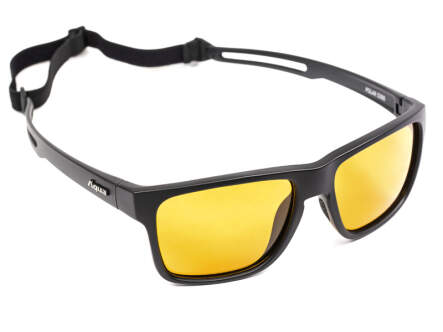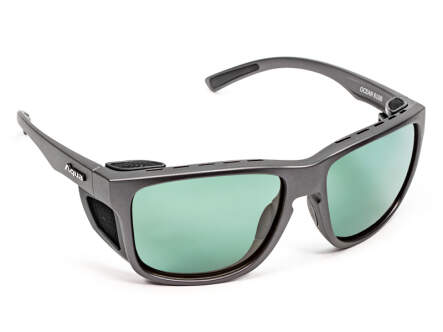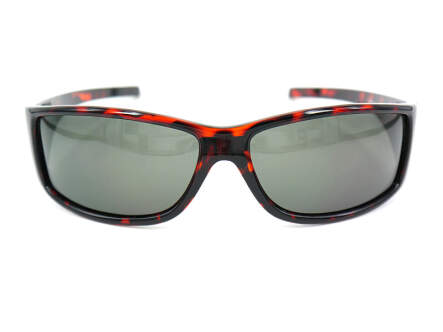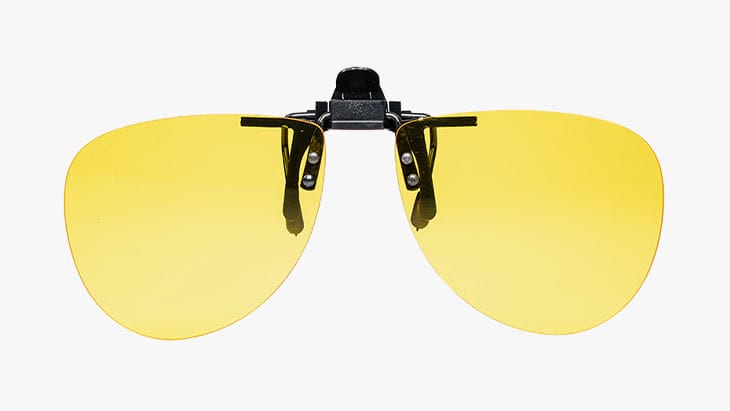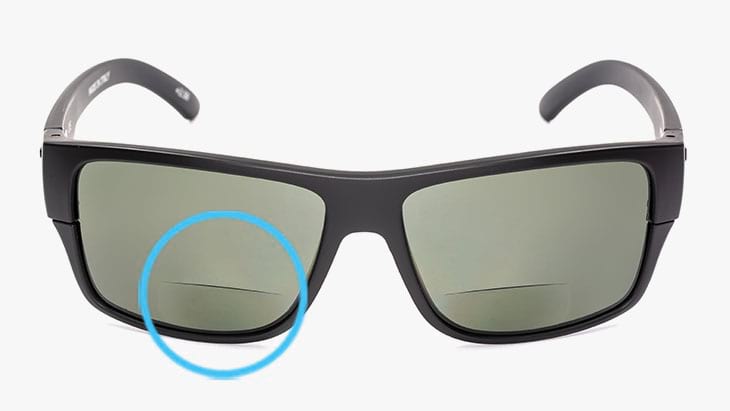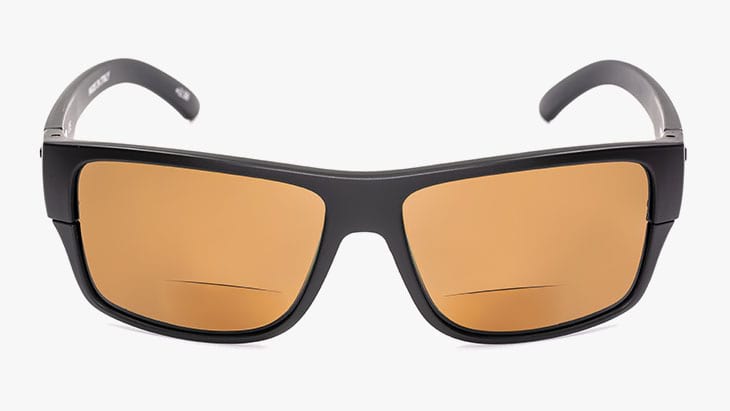FLY FISHING SUNGLASSES
Our polarised sunglasses offer best protection against harmful UV radiation. Keep the overview!
FISHING SUNGLASSES
If you are a fisherman, good sunglasses should be an essential accessory to your equipment. Protecting your eyes with appropriate lenses is very important for both your health and safety. This is why we have decided to create a mini-guide to clarify the situation and help you choose the right sunglasses for you.
Let's start with lenses and try to understand which is the most suitable for practising your beloved discipline. There are various types, but the ones that are of most interest to anglers are 3:
- Polarised
- Polarised & mirrored
- Polarised & photochromic
As you will have noticed, polarisation is always present, and a pair of fishing glasses cannot do without it. Below we will try to understand why and we will analyse in detail these 3 types of lenses.
POLARISED LENSES
What is polarised light?
Natural light is an electromagnetic wave that moves through space in all directions. When the light emission is completely random, as is the case with the sun, we are talking about non-polarised light.
Like all electromagnetic waves, light interacts with matter and can therefore be reflected and absorbed by the environment. The polarisation of light occurs when a randomly moving electromagnetic wave, such as that of the sun, encounters a more or less reflective surface and is then directed in a single direction. Keep in mind that nitrogen and oxygen molecules in the air also partially reflect sunlight, so the light that reaches your eyes is already partially polarised.
When sunlight encounters surfaces such as snow, water or sand, it undergoes considerable polarisation, as the light is reflected and channelled in many directions depending on the degree of incidence. Fortunately, not all directions in which light is reflected are a problem for our eyes. Reflected light that is closest to the vertical axis carries useful information and allows you to see natural colours and contrasts without tiring the eye. On the other hand, the reflected light that comes closest to the horizontal axis creates that annoying glare that prevents you from seeing clearly, fatiguing the eye and distorting the true colours of the environment.
So what are polarised lenses for?
Polarised lenses, thanks to their special structure, prevent horizontal reflected light from reaching your eye, allowing only vertical light to pass through.
As we have just seen, horizontal light generates annoying reflections, strains the eye and prevents you from seeing the real colours of the environment. It actually takes away the contrast, saturation and sharpness of what you are looking at. In the specific case of fishing, horizontal light is what prevents you from seeing the bottom of the river.
By filtering out only the vertical light, i.e. the 'good' light, with the use of polarised lenses you will have a clearer and more defined view. The colours will be saturated and natural, and your eyes won't get tired even if you have to spend many hours in situations with strong reflected light, such as fishing or on the ski slopes. Snow can reflect almost 90% of sunlight, while water reflects about 20%.
Polarised lenses are essential for outdoor activities, and they are practically obligatory when it comes to fishing. Polarised lenses eliminate the reflections caused by the incidence of the sun's rays on the surface of the water, allowing you to see the bottom of the river clearly. So, as well as being able to see at a glance where the fish are, you will be able to see clearly where you put your feet when wading in a river, allowing you to move around safely and confidently.
The colour of polarised lenses - which one should I choose?
The choice of lens colour is not just a matter of aesthetics, as different colours behave differently and adapt more or less well to different light conditions. When it comes to polarised lenses, there are basically three main colours: yellow, brown and grey.
Yellow polarised lenses:
Yellow polarised lenses are very bright, improve visual perception in low light conditions and can be used at nightfall or in overcast conditions without darkening the view too much. This is very important for anglers because polarised sunglasses help you to get a better view of the bottom, whether it is in a river or lake, making them very useful even when the sun is out. Using dark glasses when there is little natural light is definitely counterproductive. Yellow lenses are often used by bird hunters, because it creates a contrast between the blue of the sky and the prey. This contrast is also generated when looking at the water, making it easier to spot any fish in activity.
Details:
- Very bright
- Also suitable for low light
- Creates colour contrasts that make it easier to spot fish
- Slight distortion of colours
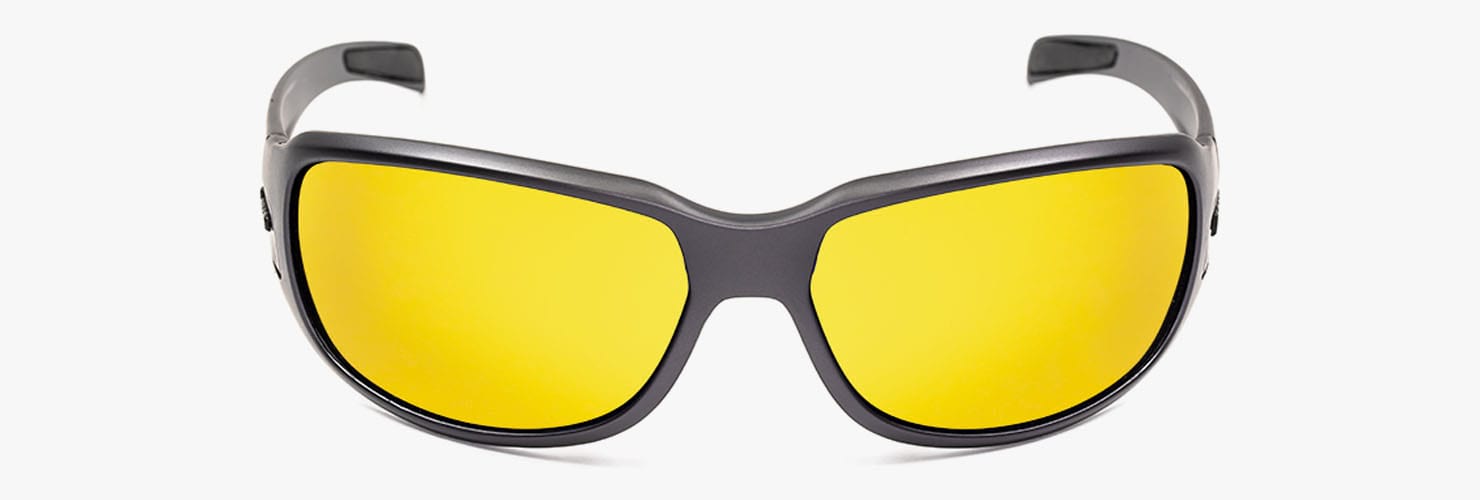
Grey polarised lenses:
Grey polarised lenses significantly reduce the intensity of sunlight and are very restful for the eye. In this case, the contrast is not altered and the colours also remain natural, without distortion. Of course, this type of lens is less effective when the light is scarce because it tends to darken the view, but you can spend all day in the sun without straining your eyes. As with all polarised lenses, they eliminate glare on the surface of the water, allowing you to see the bottom well.
Details:
- Significantly reduces light intensity
- Recommended for central hours of the day
- Do not distort colours
- Do not create excessive contrasts
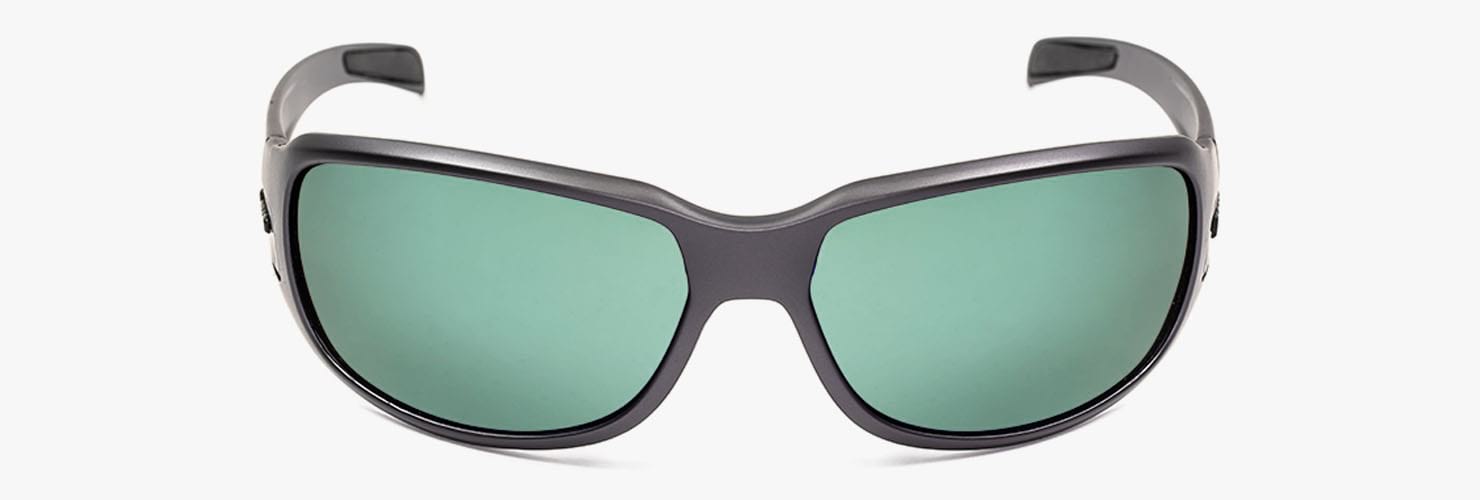
Brown polarised lenses:
Brown polarised lenses contrast the strong cold light of winter days very well, in fact this shade is often used by skiers. This type of colour is very soothing and is recommended if you are particularly sensitive to light, as it allows you to fish even on the sunniest of days without straining the eye in the slightest. Brown lenses are certainly not ideal for use in low light, as they darken the view considerably. Even with brown lenses you can see the river bottom very well, although you will need more light than a yellow lens to get a good view.
Details:
- Ideal if you are sensitive to light
- Very restful for the eye
- Suitable for high light situations
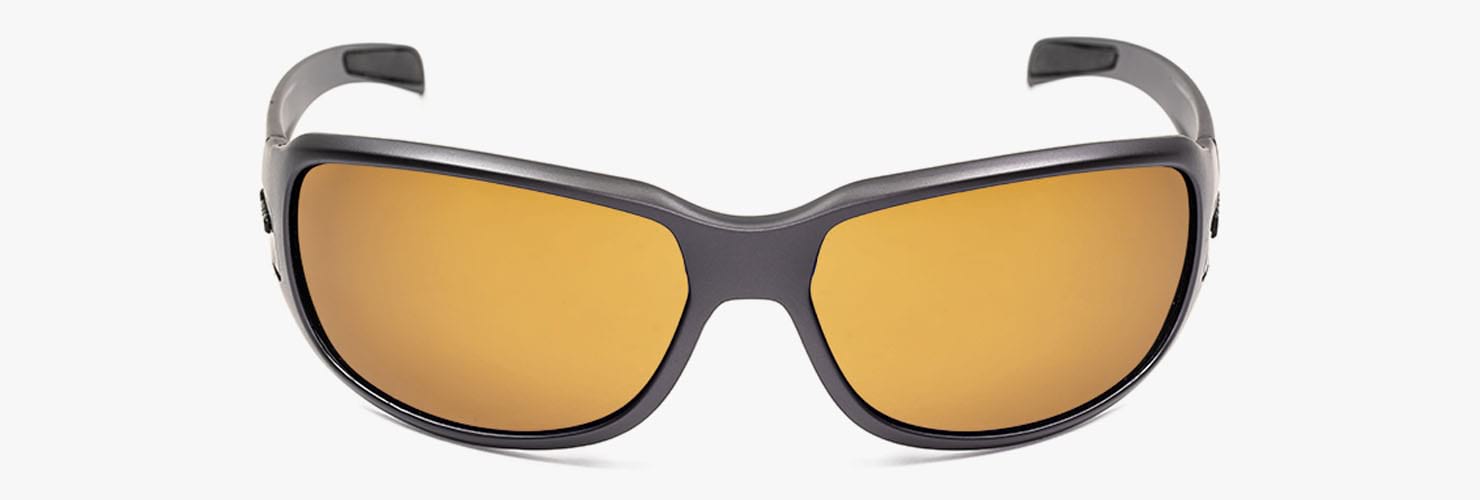
POLARISED & MIRRORED LENSES
Mirrored lenses are not automatically also polarised, so it is best to make sure they are. As we have just seen, polarised spectacles are essential, especially in freshwater fishing. The mirroring of the lens must therefore be an addition that is made to an already polarised lens.
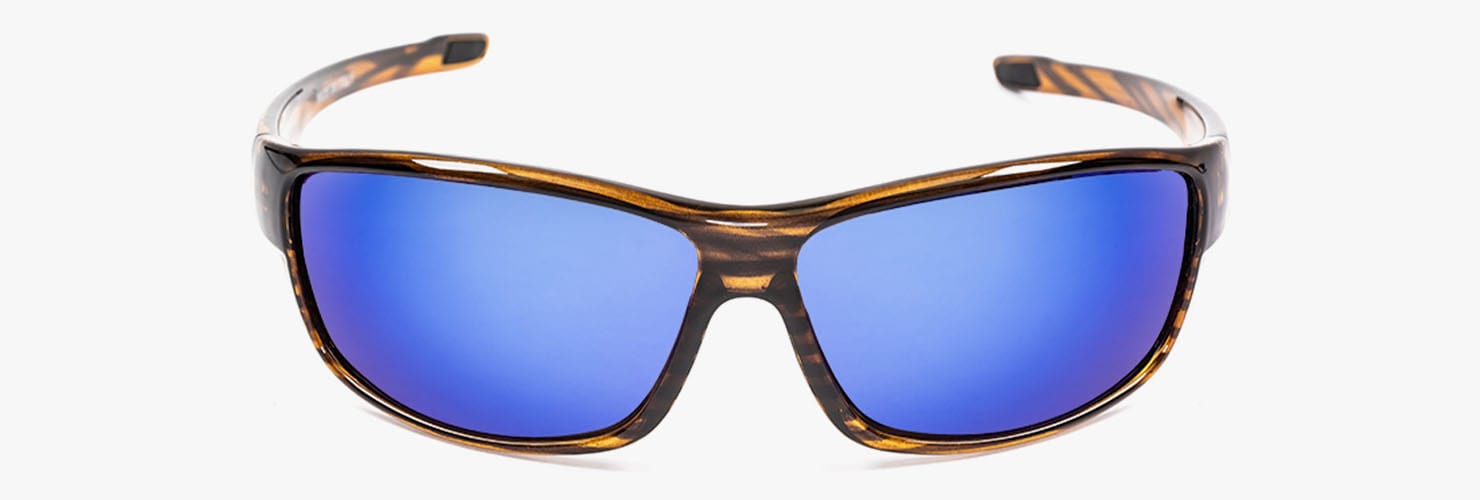
Mirrored spectacles are coated with a highly reflective metal film which is placed on the surface of the lens and which is able to reflect 10 to 60% of the sunlight. For this reason, they are particularly suitable and sometimes necessary for outdoor activities with strong reflected sunlight such as skiing, sea fishing or lake fishing.
When it comes to stream fishing, mirrored sunglasses are an addition you can do without. In fact, a mirrored sunglass worn in low light situations darkens the view too much and, as we have already seen, when fishing in streams it is often necessary to wear sunglasses even in low light to be able to see the bottom of the river.
The same applies to the choice of colour as for polarised lenses. Remember, however, that mirrored glasses tend to darken the view much more because the light that can filter through the lens is less, and this type of lens tends to distort the natural colours of the environment.
The colours of this particular reflective metal film can be almost infinite, which is why spectacles with mirrored lenses offer a wider choice of colours than just polarised lenses, which mainly have three colours: yellow, grey and brown.
POLARISED & PHOTOCHROMIC LENSES
What is a photochromic lens?
A photochromic lens is able to change its colour according to the amount of light it comes into contact with. It will therefore be very bright in low light situations and increasingly darker as the ambient light increases in intensity. This technology is often used to make it possible to have both prescription glasses and sunglasses in a single product.
The colour change takes place through a chemical-physical process whereby special chemical pigments react to the different light intensity. These pigments can either be an integral part of the lens or can be applied as a thin layer afterwards.
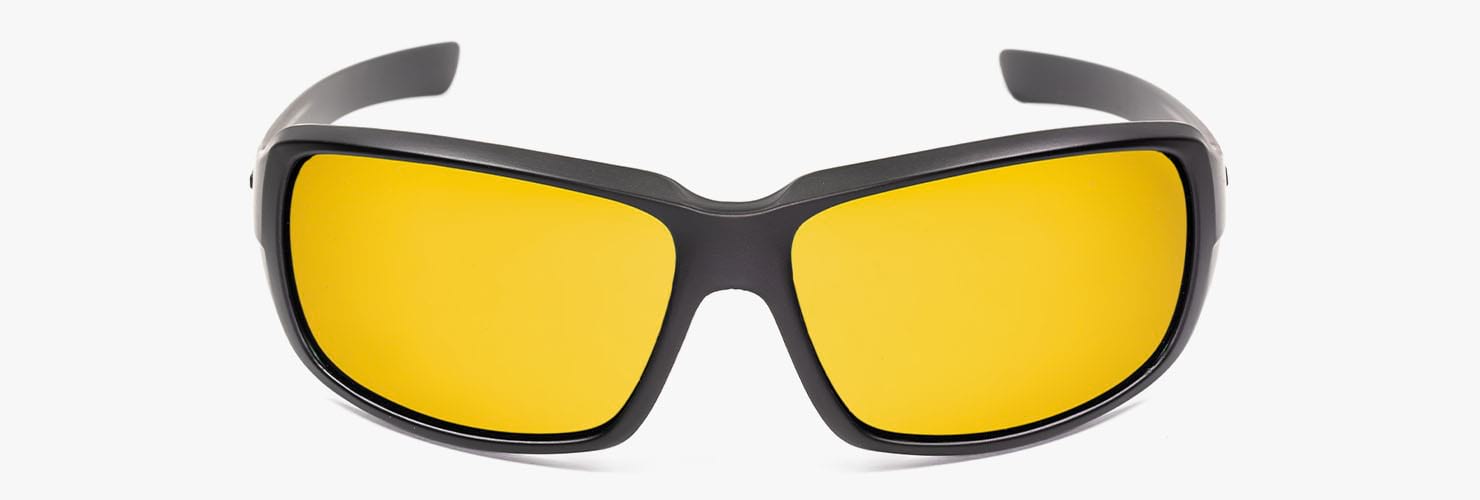
Photochromic glasses for fishing:
Polarised photochromic sunglasses are a very attractive product because they adapt very well to all the different light conditions you will encounter during the day.
Generally the colour of these glasses is yellow/amber. The advantage of this colouring we saw very well when we talked about polarised lenses at the beginning of this guide. Yellow lenses are very bright because they let in more light than dark lenses. This allows you to take advantage of the polarisation of your spectacles to see the river bottom well even on days with little sunlight.If the ambient light is low, dark spectacles are counterproductive. However, as soon as the ambient light increases, the photochromic sunglasses will start to darken, providing you with adequate protection depending on the intensity of the light present.
The yellow/amber colour is definitely one of the best if you want to see clearly what is on the river bottom because it creates beautiful contrasts, helping you to spot any active fish effectively. Without neglecting the most important fact, which is to know clearly where you are stepping, so that you can wade the river safely.
PROTECT YOURSELF FROM UV RAYS
What are UV rays?
Without getting too scientific, it is important to know that sunlight gives off 3 different types of UV rays:
- UVA
- UVB
- UVC
UVA: UVA rays make up 95% of the UV light produced by the sun, which manages to pass through the earth's atmosphere and penetrate deep into the skin and eyes. This kind of light is present all year round and is not shielded by clouds, so even in overcast situations, UVA rays hit the skin and eyes. For this reason, if you spend many hours outdoors, you should always wear glasses with 100% UV protection.
UVB: UVB rays make up 5% of the UV light that penetrates the earth's atmosphere and are much less penetrating than UVA rays. This type of light is the cause of redness and sunburn due to unprotected exposure to the sun. UVB rays are more present in certain months of the year and are particularly intense in the middle of the day. Unlike UVA rays, UVB rays are filtered out by clouds.
UVC: This type of UV light is very intense, but is completely absorbed by the earth's atmosphere. Consequently, it does not pose any health risks.
The risks of UV radiation:
UVA and UVB rays are harmful to the body and when you spend a lot of time outdoors you need to protect your skin and eyes. Prolonged exposure to these rays can lead to a variety of problems, including serious and irreversible ones such as cataracts or, even worse, melanomas. All this is amplified if you are in the presence of water, snow or sand because these elements create strong reflections that considerably increase the degenerative effect that UV rays have on our organism. UVA rays, which are the most damaging, are not filtered out by clouds or windows. This is why they are always present and it would be better to protect yourself even on cloudy days or days with little light, perhaps by using bright yellow/amber lenses.
Rather better without glasses!
Having a pair of polarised or mirrored spectacles does not automatically mean that they will protect your eyes from the sun's UV rays. In order to have this kind of protection, the lenses need to be specially treated and not necessarily so. Sunglasses that fail to screen out UV rays are not only useless but are even more harmful than wearing nothing at all.
Imagine the pupil as an 'entrance hole' through which UV rays can pass and hit the retina. If we do not wear sunglasses, our pupil will be very small because of the strong light. This physically reduces the space through which UV rays can pass and hit the inside of our eye.
If we wear sunglasses that do not offer UV protection, the light that hits our eye is less, but the amount of UV rays remains the same. Less light intensity will dilate our pupil, which will offer a greater "entry hole" for UV rays that will damage the retina in the long term.
UV protection:
We advise you to always make sure that the glasses you are buying have the information note attached (as required by CE regulations) which specifies the UV protection and the protection category to which they belong.
There are five categories of protection: 0, 1, 2, 3 and 4. Each category corresponds to a different percentage of absorption of sunlight by lenses that are more or less dark, which is highlighted by a specific symbol. However, they all offer full UV protection.
The most suitable categories for us anglers are cat 2 and cat 3.
CATEGORY 0: They offer almost no protection from light intensity. They are almost transparent or with very light tints and generally protect against wind and dust.
CATEGORY 1: Again, the lens colour is very clear and in addition to protecting against wind and dust, they also offer minimal protection against sunlight. Suitable for cloudy days or days with little sun.
CATEGORY 2: They offer medium protection. These lenses are ideal for the city and everyday life. Very comfortable if you frequently switch between light and dark situations, perfect for stream fishing situations with shady areas.
CATEGORY 3: Category 3 spectacles offer excellent protection from light intensity. Ideal for prolonged outdoor activities. Perfect for the sea and the mountains and especially ideal for us fishermen. This is definitely the category that encompasses most of the sunglasses on the market.
CATEGORY 4: This type of lenses are very dark and are designed for extreme situations such as deserts or glaciers where, in addition to the strong light intensity, there are also strong reflections due to the environmental characteristics. They should not be used for driving.
SPECTACLE FRAMES
The spectacle frame is the frame on which the lenses are mounted and which then rests on the nose and ears. Today's market offers frames in all shapes, colours and materials, and people are often guided by aesthetics alone. Nothing could be more wrong! There are three fundamental characteristics that a pair of fishing glasses should have:
- Lightweight
- Enveloping
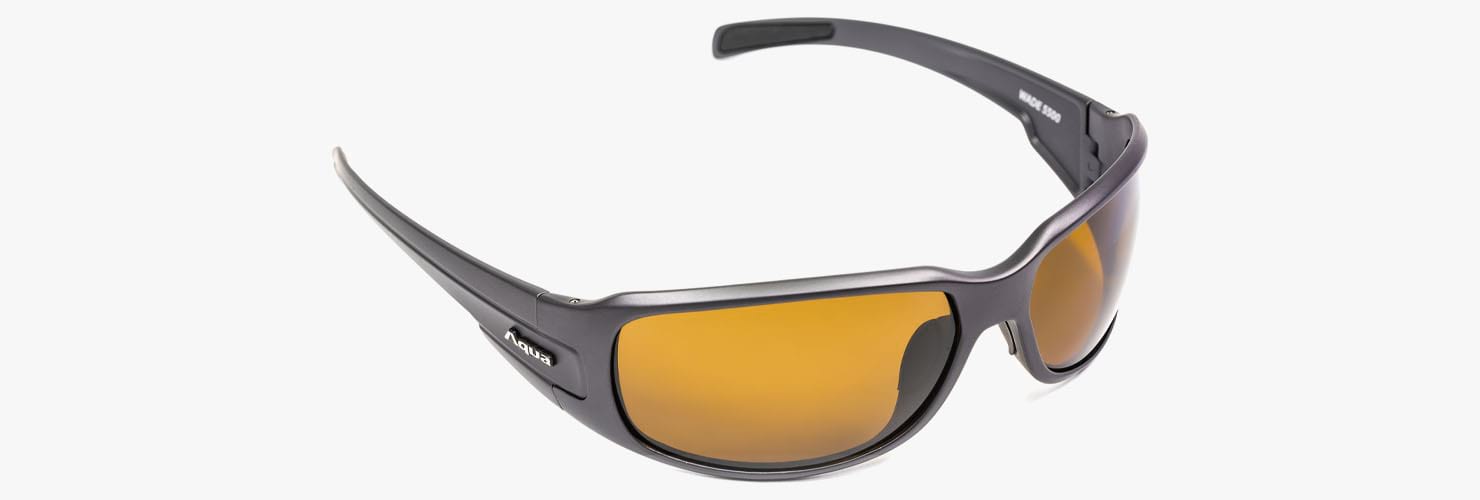
LIGHT: A pair of fishing glasses must be light. It sounds trite to say, but this is often underestimated. When you try on a pair of sunglasses you don't pay much attention to the weight because you only wear them for a short time and they all look very light. In fishing, as we have pointed out many times, sunglasses must be worn all day long, even in cloudy weather. A heavy frame creates irritation and discomfort when worn for so long and it is better to choose one that is aesthetically ugly but very comfortable than one that is beautiful but heavy.
WINDY: When fishing, especially in the stream, you are very dynamic. You walk, climb and often have to tilt your head. A wrap-around sunglass remains stable on the head, even if you make sudden movements. Risking having your new sunglasses come off every time you catch a fish could be quite annoying. Wrap does not mean tight. The sunglasses must naturally follow the curvature of the head without tightening, otherwise they would become uncomfortable and unusable.
A wrap-around goggle protects you very well from wind, both frontally and laterally. It also helps to protect you from the sun's harmful ultraviolet rays, as a non-wrap-around pair of glasses could allow up to 60% of the UV rays to pass through the sides of the frame.
SOLUTIONS FOR THOSE WITH VISION PROBLEMS:
If you need corrective lenses because you have vision problems but still want to protect your eyes with sunglasses, there are several solutions.
CONTACT LENSES: If you use contact lenses on a daily basis, there are no particular problems because you can wear any type of sunglasses. The only thing you need to pay attention to is the shape of the frame, which needs to be wrap-around in order to protect the eye very well from the wind. Contact lens wearers know very well that the wind tends to dry out the eyes and forces them to use artificial tears to keep them moist. This problem is particularly pronounced when fishing in the sea or lake. There are special glasses available on the market with a rubber lining that adheres perfectly to the eye area and offers maximum protection from dust and wind.
EYEGLASSES AND SUNGLASSES: Sunglasses and eyeglasses: As everyone knows, it is possible to go to your optician and have polarised lenses made that are also prescription lenses. The price is certainly not insignificant but it is a very good solution and perhaps the most comfortable and practical. You will have to be a little more careful when fishing to avoid losing or ruining them.
EYEWEAR ON EYEWEAR: There are glasses specially designed to be worn over prescription glasses, such as the FIT OVER model by Aqua. Their special frame is able to accommodate and hold your prescription glasses while maintaining a perfect overlap of the lenses in any situation. It is also possible to wear other types of sunglasses over your prescription glasses, but it is definitely more uncomfortable due to the fact that they will move a lot independently of one another, forcing you to reposition them often. In addition, there is a real risk that a sudden movement could cause them to fall to the ground.
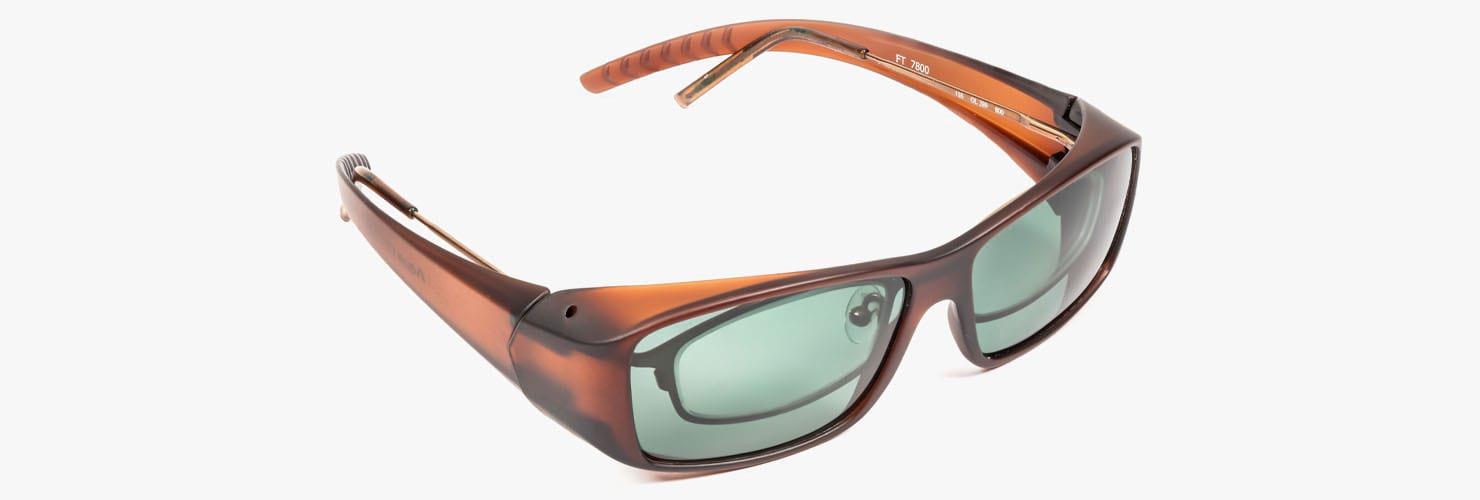
CLIP-ON LENSES: Clip-on lenses are another very good solution. They are lenses with a built-in clip that can be attached over your prescription glasses. The various shapes available allow you to choose the one that best suits the shape of your prescription glasses. The clip has a pin that allows you to lift the lenses from the glasses when you don't need them, without having to remove them completely. The opposite is also possible, i.e. attaching corrective clip-on lenses to sunglasses.
There is another type of clip-on lens that can be fitted to hats with. This type of lens also has a pivot that allows you to tilt it 90° to remove it from view without having to remove the clip completely from the hat.
FOCUS POLARVIEW LENSES: Finally, we would like to point out a very interesting product from the Italian company Aqua, which has created the FOCUS POLARVIEW sunglasses. These are normal polarised sunglasses in two colours: grey and brown, with a small portion of lens in the lower part of the sunglasses which is able to correct vision. There are different gradations available: +1.5, +2.0, +2.5. Basically, when you are looking straight ahead at your surroundings, you will only use the sunglasses, but when you are looking down, typically when you are tying fishing leader or tying your flies to the leader, you can use the corrective lens to see what you are doing better.


